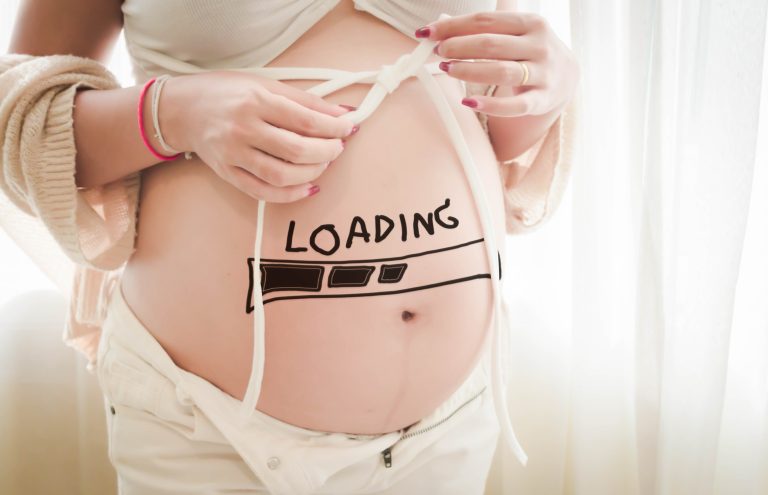Signs That Labour Is Approaching
The excitement of becoming a mother is the same for many women. However, the process of labour and delivery varies from woman to woman and even from one birth to another for the same woman, but the signs are almost the same for everyone. When you find out about your pregnancy and visit your obstetrician, they must have asked for your last menstrual period and surely provided you with an estimated due date for your baby. However, only about 4% of births occur on these estimated dates. Therefore, expectant mothers need to have an idea about the signs of labour. If you know these signs and can monitor yourself and your baby well, you can alleviate your fears more easily as the days approach the birth.
So, how can you tell when labour is approaching? Let’s take a look together at the signs that indicate your baby is on the way!
1. Descent of the Baby
If you are a first-time mother, the baby starts to change position in your abdomen approximately a few weeks before the due date. The pressure you feel in your chest gradually diminishes, and the baby positions itself towards your pelvis. Besides the relief of starting to breathe more easily, you may also feel the pressure on your bladder more frequently. If you have given birth before, this sign may not manifest itself until the last moment.
2. Cervical Changes
Changes that occur in the cervix can give us clues about many things. In normal times, changes in cervical softness can be tracked for ovulation monitoring, and softening and dilation of the cervix also emerge as a sign that labour is approaching. However, it is difficult for you to notice this change yourself. Your doctor will want to see you more frequently as the birth approaches. During the examination, they may want to perform a vaginal examination to determine if the birth is approaching.
If you have given birth before and your vaginal opening is 1 cm or more, it can be said that your labour has begun. However, if this is your first pregnancy, this amount of dilation generally does not indicate that birth will happen immediately.
3. Increase in Contractions
Braxton Hicks contractions, which begin to be seen towards the end of pregnancy, and whose cause is not fully known, are often confused with labour contractions.
These contractions, which are an expression of preparing for childbirth, do not increase in frequency or intensity like labour contractions over time. They can occur at any time during the day. If the frequency and intensity of these contractions increase, they can be considered a sign of labour. Back pain may also accompany contractions. Ultimately, your body and bones are in significant preparation for childbirth and have no qualms about informing you.
4. Appearance of Bloody Discharge
The appearance of pink or bloody discharge is the event of the mucus that protects the uterus and the baby from external factors being expelled spontaneously during pregnancy. Having sexual intercourse in the last weeks of pregnancy can also cause this mucus layer to break down and be expelled. This mucus, which has a slight jelly-like appearance, can be pink or reddish in colour or even transparent.
The arrival of this discharge is a sign that the uterus is now ready for childbirth. The discharge may come all at once or in pieces on different days. When you encounter this discharge, you should not panic but inform your doctor.
Does the arrival of the discharge indicate that labour will start immediately? No, labour can start within a few hours or even a few days. Therefore, there is no need to panic immediately.
5. Increased Bowel Activity & Diarrhoea
As childbirth approaches, many muscles in your body besides your uterine muscles begin to relax. This relaxation also applies to the muscles in your rectum area. This situation can lead to frequent visits to the toilet and diarrhoea. Although not a cause for concern, complaints such as nausea and vomiting may also occur.
6. Weight Loss
Except for exceptional cases, women gain weight steadily throughout their pregnancies. Especially towards the last months, this gain can accelerate, and oedema may occur. However, as the birth approaches, you may stop gaining weight, your oedema may disappear, and you may even lose a few kilos. Don’t worry, the lost weight will be from you, not your baby. 🙂
7. Unexpected Burst of Energy
In the final months of pregnancy, when the abdomen is very large, movements are restricted, and there are difficulties in meeting basic needs such as breathing and sleeping, you may feel tired and restless. However, many women experience a sudden burst of energy before childbirth. Suddenly, you may find yourself discarding that tired and sluggish feeling and cleaning your house. Although it sounds strange, this may be a power given to you by nature to welcome your baby strongly and be ready for childbirth.
8. Water Breaking
The most well-known and popular sign of normal labour is the water breaking. Just as in films or series, the emphasis on a woman’s pregnancy is made with nausea, similarly, the emphasis on the beginning of childbirth is often made with the water breaking. Therefore, if your water breaks, it means that labour has begun!
Your baby develops inside the amniotic sac, which is filled with fluid, from the beginning of pregnancy. The rupture of this sac and the release of the fluid mean that the baby cannot stay in the mother’s womb any longer and is more prone to infection. Therefore, whether your water gushes all at once or comes out drop by drop, you must inform your doctor of this development. However, do not panic immediately; the breaking of your water does not mean that you will give birth right away.
When Should You Go to the Hospital?
First and foremost, talk to your doctor who is monitoring your pregnancy about what the signs of labour are and what to do in each case. Knowing when to act will reassure you and help you overcome your fear of childbirth. You may want to panic as soon as your contractions start. However, the best action is to inform your doctor about your current situation first.
If contractions are less than 5 minutes apart and last for at least 30 seconds, it’s time to go to the hospital. At this point, you need to be able to distinguish between false labour contractions and true labour contractions. If you’re not sure, you can try taking a warm shower. False contractions usually disappear after a shower. If your contractions are still ongoing and intensifying, it means labour has begun.
The last weeks of pregnancy for expectant mothers are spent in a mix of excitement to meet their babies and stress about childbirth. However, it is important to remember that childbirth, although painful, is a very different and unique experience that many women may want to experience repeatedly. Instead of fearing childbirth, try to enjoy every moment by being informed about the signs of labour. Remember, at the end of it all, something wonderful awaits you!




